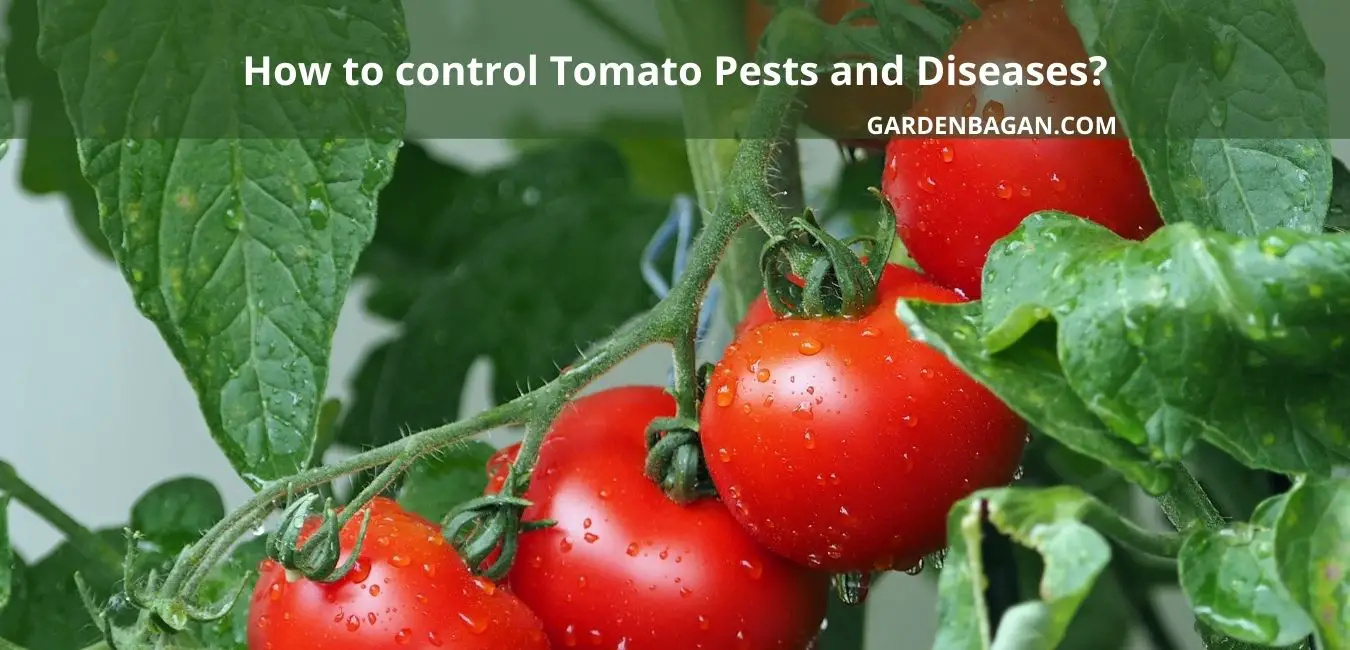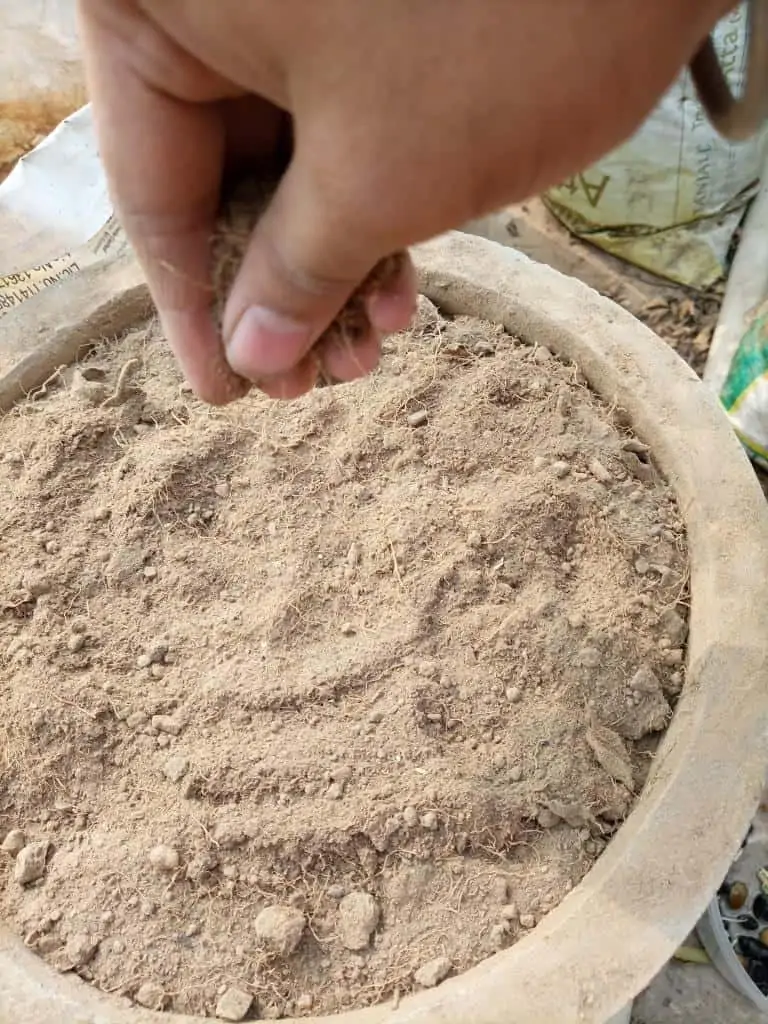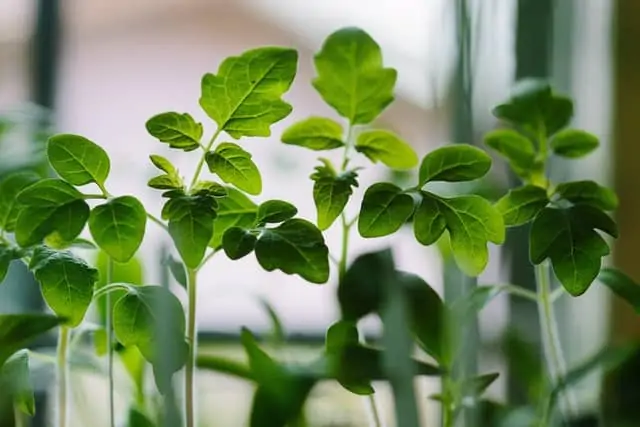Every kitchen gardener faces some problems with vegetables. If it is Tomatoes then you may find extra problems to worsen your situation. Tomatoes or Solanum Lycopersicum are delicate plants with extensive growth and nutritious body sap. This attracts lots of unwanted pests and diseases to your plant. More or less every tomato variety is prone to some pest. You can either take prevention measures or act accordingly after infection. In Worsts cases you must know How to Control Tomato Pests and Diseases?

Check out my previous post: Should You Mist Tomato Plants?-Everything to Know
Reasons for Pests attack in Tomato Plants
Overwatering is the reason behind 70% of Tomato pests and diseases. Excess moisture in the soil and on the leaves acts as a breeding ground for pests and fungal spores.
Infected Soil, incompatible seeds, over-fertilization, and wrong pruning techniques are some other reasons for pest attack in Tomatoes.
If you are good with all these conditions and still having problems with tomatoes. Then lookout for any debris, leftovers from the previous winter season in the garden. Cleanliness is an important technique to prevent any problem in your garden.
Finally, Low Sunlight, inadequate temperature, and high moisture can also cause many problems to your Tomatoes.
Will Tomatoes Grow in Shade?- Kitchen garden facts
Common Tomato Pests
Almost every Tomato variety is affected by some kind of pests. Pests are basically insects of variable shape and size who feed on the plant sap, new leaves, and stems.
Some of the most common Tomato pests are-
- Aphids
- Spider mites
- Mealybugs
- Gnats
- Whiteflies
- Cutworms
- Horn Worms
- Blister Beetles
- Flea Beetles
- Stink Bugs
- Root-knot Nematodes
Keep reading for the details of Tomato pests and diseases.

Aphids: Identification, Symptoms, and Treatment
Identifying Aphids
- Aphids are Tiny green, black, brown, or grey soft body insect. Usually seen on the underside of the leaves away from direct sunlight.
- The infected branch or portion of the plant appears sticky due to the presence of Honeydew.
- Aphids feed on the plant sap and produce sweet honeydew. Usually, They attack tomato and other soft stem plants. Although they can infect hardy bushes.
- Excessive Ant movement can be seen on the infected tomato plant. Ants don’t eat aphids instead they feed on the honeydew prepared by them.
Symptoms
- Leaf curl and stunted plant growth are two common symptoms seen on tomato plants infected with Aphids.
Treatment

- Any mild soap or liquid dish wash is efficient in controlling aphids. Just mix 10-20 ml dish wash with 2 spoons of cooking oil in 1l or 2 glass of water. Stir it well and spray it all over the infected plant. Spray this solution in the early morning time and repeat this thrice a week.
- You can simply pinch off the infected plant if the problem is minimal. Removing and destroying the plant is the final option in the worst infestation cases.
- Neem oil spray is also very effective in controlling Aphids in your vegetable garden.
Spider mites: Identification, Symptoms, and Treatment
Identifying Spider Mites
- Spider mites are tiny red, brown, black, or transparent green insects. They look like tiny spiders but they are not. You will need a 10x hand lens to see them.
- They feed on new leaf growth. And leave yellow trailing marks on the leaf surface.
- You can spider mites on the tip and underside of fresh leaves. Web cluster over fresh growth is an easy identification.
Symptoms
- Yellow and brown vein-like trails are signs of spider mite infestation. Usually, the lower leaves of the plants are first infected.
- Dropping of leaves is a common symptom of spider mite attack.
- Minor infestation is not harmful but in severe cases, the plant can wilt and die in no time.
Treatment
- Neem oil spray is very effective in the treatment of Spider mites.
- You can also spray the infected plant with insecticidal soap and oil solution.
Meleabug: Identification, symptom, and Treatment
Identifying mealybug
- Mealybugs are very easy to identify. They are small sticky insects covered in white powdery substances.
- they look like a small snowball on stem nodes and under the leaves.
- Mealybugs also release sweet sticky honeydew that attracts Ants.
Symptoms
- Deformation of the Tomato plant tips, curling of leaves, and stunted growth are some common symptoms of mealybug attack.
- They feed on plant sap causing nutrient deficiency for new shoot growth.
- Mealybugs attack tomatoes especially when temperature and conditions are not favorable.
Treatment
- Spray mealybugs with a diluted solution of rubbing alcohol. This is the only way to start proper treatment for these nasty bugs.
- Alcohol spray will remove the sticky white protective covering and expose the bugs to other measures. Otherwise no treatment cal help with mealybugs.
- Spray again with Neem oil and liquid soap solution to kill the bugs. Repeat the spraying thrice at 2 days interval.
- Mealybugs can be really difficult to treat sometimes. Therefore, Pinching off and burning the infected plant tips at the initial stage is helpful. In worst cases killing and destroying your tomato plant is the only way to save others.
Whiteflies and Gnats: Identification, symptoms, and Treatment
Identification
- Any culture of tiny bugs or flies should be suspected. Whiteflies and gnats are tiny insects that feed on the plant sap.
- You can look out for flies and tiny bugs under the leaves. But an infestation can only be noticed after visible symptoms.
- They usually leave pale green-yellow marks at their feeding spot. Although there are several other possible reasons for this discoloration. So you must inspect for that after identification.
Symptoms
- Yellowing, spot formation on leaves, stunted new growth, and unusual drooping is symptoms of Whiteflies and gnats.
- Usually, these bugs can also spread fungal diseases.
Treatment
- Early treatment is always effective. Keep the tomato plant clean and moisture-free.
- Spray the tomatoes with neem oil once every week
- Place bug traps beside your tomato plants. Sometimes mixed and intercropping is also very effective in the treatment of these pests.
Cutworms & Hornworms: Identification, Symptoms, and Treatment
Identification
- Cutworms are dark brown, grey, or black larvae that feed on leaves and soft stems. Hornworms are green or Yellow giant 2-3 inch larvae with a couple of tiny horns.
- Both cutworms and Hornworms are furious feeders and are easily identifiable. They are nightcrawlers and can eat your entire tomato plant overnight.
Symptoms
- Missing green leaves, stems and other visible cuts are common symptoms of a worm attack.
Treatment
- Hand-picking especially at night is the best option for early treatment. You must be pro-active with these insects otherwise your garden will be empty in a couple of nights.
- Sometimes paper or foil walls can protect your plants from cutworms but this is not always effective.
- They can crawl from one plant to a nearby plant.
- Therefore the best option is to introduce natural predators like birds. Don’t stop manual removal whenever you spot one in your garden.
- Finally spread cornmeal around the root ball and neem oil and BT spray over the leaves to distract these worms. Although spraying is not 100% effective still the cornmeal can kill some of these worms.
Blister Beetle, Giant beetle, and Flea Beetle: Identification, symptom, and Treatment
Identification
- Many tomato growers face some kind of beetle attack in their garden. These beetles are so common that you will see them every time you visit your garden.
- Ther vary in shape, size, and color. Although ladybug beetles are friendly and helpful others are not.
- Blister beetles are infamous for their burning effect. They release an enzyme that can cause blisters on the skin. It is painful.
- They are small bugs with colorful stripes or patterns on their back. They usually feed on soft leaves.
- Giant Japanese beetles are easy to identify as they are the biggest ones you have ever seen. Their infestation is spreading every year throughout the states.
- Flea beetles are small black or yellow striped bugs. These beetles can jump from one leaf to another like a flea. They feed on tender stems and soft leaves. They can also damage the buds and fruits.
Symptoms
- Chopped leaf edges, holes in the leaf, and soft stem, skeletonized leaf structure is the symptom of beetle attack.
- Severe infestation of beetles can turn your garden into a cemetery of dead skeletonized tomato plants.
Treatment
- Introduce natural predators like Frogs, Toads, and Lizards in your garden. They can eat these bugs can control their population.
- Birds can also help in the treatment of beetles.
- Mixed cropping especially with marigold plants can help to deter the bugs. Bugs don’t like the strong scent of marigold.
- Dusting with diatomaceous earth can also help in the treatment of beetles.
- Spray 2% neem oil solution with water and insecticidal soap to the infected tomato plants. This treatment will kill the bugs and prevent further attack.
Stink Bugs: Identification, Symptoms, and Treatment
Identification
- Stink bugs are black, brown, dark red, or yellow wood-like insects. They feed on leaves, fruits, and soft stems.
Symptoms
- Usually yellow patch on ripening fruits with white spots on the inner side.
- Tiny holes on the fruit skin.
- Strong fowl order is a common symptom of Stink bugs.
Treatment
- Handpicking is always helpful in controlling the stink bug population.
- The best option is to introduce natural predators like birds, toads, frogs, lizards, and spiders in your vegetable garden.
- Intercropping is useful in bug treatment.
Root-Knot nematodes: Identification, symptoms, and Treatment
There are more than 20000 different types of nematodes. Not all of them are harmful to our garden. In fact, some varieties of nematodes are natural predators of pests and insects. They can help in Organic Pest control.
Some nematodes especially the Root-knot nematode are really very harmful to any plant. They are microscopic worms so you can’t see them with naked eyes.
Instead, you can observe their impact on the root structure. Several knots and deformed bulbs, node-like structures can be easily seen on the roots of infected plants.
It mostly spreads with infected soil. You cannot treat an infected plant after infected. This problem can only be treated with proper soil treatment before tomato plantation.
You can add fungicide, nematode killers to te soil. The best option for container gardeners is to dry fry the soil mix once every season before planting any vegetable.
How to prevent pests attack in Tomato Plants?
Prevention is always better than cure. You should be active with regular tomato plant care. This will ensure no pests can attack or infest your vegies.
Soil preparation and treatment before planting tomatoes is the best option. follow the steps carefully to avoid any pest attack in your Tomato garden.
- Clean the area around your garden. Remove any debris, leftovers of the previous season, or any dead or decaying plant or tree. All these can host several pests and bugs throughout winter.
- Maintain Proper distance between each Tomato Plant. Proper distancing can easily avoid the spread of infections from one plant to another.
- Avoid overwatering and unnecessary fertilization of the soil. Overwatering is the main reason for every pest or disease in the tomato plants. Keep the leaves dry and maintain a proper schedule for watering and fertilization.
- Grow Marigolds, citronella, or Lemongrass along with tomatoes. The strong fragrance of these plants will keep pests and bugs away from your tomatoes.
- Mixed or intercropping can help avoid chronic seasonal pest attacks. Change the location and variety of cultivars every few years. This will prevent the clustering of specific pests to one location.
- Use Row covers and fly traps as a primitive measure for bugs, caterpillars, worms, and flies in your garden.
- Always grow Tomatoes in a sunny area to keep them healthy and free from any pest attack.
Tomato Diseases and Solution
Read more about Common Tuberose Pests and Diseases with Solution
12 Common Tomato Diseases
- Damping Off
- Septoria leaf spot
- Bacterial stem and fruit canker
- Early blight and Fall Blight
- Bacterial leaf spot
- Bacterial wilt
- Leaf curl
- Mosaic
- Tomato spotted wilt disease
- Fusarium wilt
- Tomato Pith Necrosis
- Tomato leaf mold
Keep Reading about Tomato pests and diseases. Buy best quality Tomato seeds on Amazon
Damping Off
Damping-off is a common problem with tomato seedlings. It happens in two stages.
In the pre-emergence stage, the seedling dies before reaching the soil surface. The new root and shoot growth of the plumule is killed by fungal growth.
New seedlings become soft and sickly at the bottom collar around the soil surface. The seedlings become week and fall over in the post-emergence phase of damping-off tomatoes.
It happens due to high humidity and low temperature below 24 degrees Celcius.
Damping-off is common in tomato seedlings with crowded growth in damp soil.
It can spread from infected soil, seeds, or water. Sometimes unusual rainfall in growth season is also responsible for damping-off tomato plants.
Use of contact fungicide and drying of soil is effective in the treatment of damping off.
Thining of unhealthy seedlings is also helpful in the treatment.
Septoria Leaf Spot
It is common problem with unhealthy tomato plants. Inferior cultivars are always affected by leaf spot diseases.
Only leaves are affected with light-yellow, brown, or grey dead spots. The infected leaves will fall off eventually causing defoliation.
Septoria leaf spot is spread by another infected plant, infected seeds, mycelium, or conidia. Rainwater is sometimes responsible for this disease, especially in low temperatures.
Application of systemic fungicide at regular intervals of growth period is essential to control this problem.
Bacterial stem and Fruit Cancer
You will find spots on leaves, stems, and fruits. The infected plant will wilt and sometimes dies.
It starts with White blisters on the edge of leaves and turns red or brown with age.
The infected branches will develop brown cracks at joints and slimy bacterial ooze through these wounds.
It is caused by bacterial cells – Solanum nigrum. It is spread through a water splash and can survive in dead infected tomato branches.
Warm temperature, high humidity, and persistent soil moisture are responsible for this disease.
Keep the soil and area around your tomato plants clean. Once infected it is very difficult to treat.

Also, Read How deep to plant Tomatoes? A quick guide
Early and Late Blight
Blight is a common disease in tomato plants. Dark brown, black patches in the foliage are seen all over the infected plant.
Sometimes stem nodes and fruit jits are also affected by this fungus. The infected leaves will dry and fall of the plant.
This disease is spread by fungal spores present in dead and infected plants. Rainwater acts as a carrier of spores for the infected plant to healthy ones.
Early treatment with fungicide and removal of debris around the garden area is essential to treat this problem.
Bacterial Leaf Spot
This is similar to our fungal spot. You will see small dark spots or patches all over the foliage as well as fruits.
A warm moist environment is responsible for bacterial growth. This disease is also contagious from one infected plant to a healthy one.
Removal of debris and early fungal treatment can stop further bacterial growth.
Bacterial Wilting and Leaf Curl
Bacterial wilt is a deadly disease spread from infected wounds. It can kill a tomato plant in a couple of days. They will turn yellow and finally die due to infection.
Infected soil and high moisture can spread this disease.
This disease is incurable as the plant may have reached its end once you notice the infection. Therefore prevention is the best remedial measure for this disease.
Cutting of infected branches and treatment with the antibacterial solution can be helpful in the initial stage of infection.
Leaf curl is spread by viruses carried by whiteflies in moist warm conditions. Treat whiteflies for the remedy. This is a complex problem caused by Tomato Pests and Diseases.
Mosaic Disease
It is caused by the Mosaic virus. This virus is very contagious and can spread through clothes or hands or gardeners.
You will see patterns on fruits with discolored yellow patches. Both leaf and fruits are severely affected by the mosaic virus.
Prevention is the only option in case of this infection. Try to use certified seeds for plantation. Some varieties are resistant to the mosaic virus.
Keep your garden clean and treat the pants with good quality fungicide and pesticide to avoid any chance of infection.
Spotted wilt and Fusarium wilt
Wilting can be easily identified in tomato plants. The disease starts with dark patches on the foliage and is followed by yellowing and drooping of leaves.
The Spotted and Fusarium wilt are caused by viruses spread through several types of infectious plants and agents.
Sometimes it can be spread through infected pruner from one plant to another.
Thrips and flies are the main carriers of this disease. Therefore treat them first to stop this disease.
Tomato Pith Necrosis
It is caused by soil bourne pseudomonas bacteria. It usually affects the stem and fruit nodes. The branch may break or die due to an inadequate supply of nutrients. Necrosis is a serious problem among all Tomato Pests and Diseases.
This disease is also spread by infected soil and infected gardening tools. Therefore treat the soil before plantation with an antibacterial solution.
Tomato Leaf Mold
It is a fungal disease spread by infected soil and water. The fungal spores can live in infected plants and other debris. Therefore treat the area with fungicide, remove the debris and let the soil dry up to optimum level.
The infected tomato plant will develop dark patches with grey mold on the leaves. The leaves will fall off eventually.
Regular use of good quality fungicide through the growth period of the tomato plant can help to prevent this disease.
Also, keep the moisture level low to avoid the spreading of such diseases.
Can we save an infected Tomato plant?
Yes, You can Indeed save any infected Tomato plant. The plant must be alive and contain some healthy branches and roots for further growth.
Although it is very difficult in severe pest or disease attack to save the infected plant. Still, you can save the plant if you act fast and accordingly.
You can start with removing the infected branches and leaves. Then treat the plant with recommended pesticides, fungicides, and insecticides. Finally repot the plants in healthy soil mix and isolate the plant for some time.
Extensive care is required to save a tomato plant. Sometimes it is better to grow a new plant than saving an old infected plant. Even if you manage to save the tomato plant, it is likely to produce an inferior yield.
Therefore, it is a pure judgment call, whether you wanna work hard to save an old infected plant or do the same with a new healthy one.

Animal problems with Tomatoes
Sometimes your Tomatoes may have to face unusual Animal attacks. Most vegetable gardeners are not usually concerned with big animals but you should.
Crows, Squirrels, Wild hogs, Monkeys, Rats, and deers can visit your tomato garden for an easy treat. You will find damaged uprooted or broken plants throughout your garden.
If not so then definitely you will see half-eaten fruits. All of these can be prevented with simple measures.
- Place a big bird net or tree net over the vegetable garden. This will prevent bird attacks.
- Ste up a strong fence with wood and razor wire to prevent hog and deer attacks.
- Avoid feeding squirrels near your garden. Instead make a specific location to feed them with nuts, acorns, or anything you have. Distracting them regularly can help you get rid of squirrel attacks.
Overall it is a matter of care and proactiveness that can save you from garden failure. Tomato pests and disease are just a part of mismanagement or simply laziness in daily garden care. Therefore, stay alert and act as soon as you can.
What is your opinion about Tomato Pests and Diseases? Write down in the comment box. I’ll wait for your response.
till then Keep reading Keep gardening!

